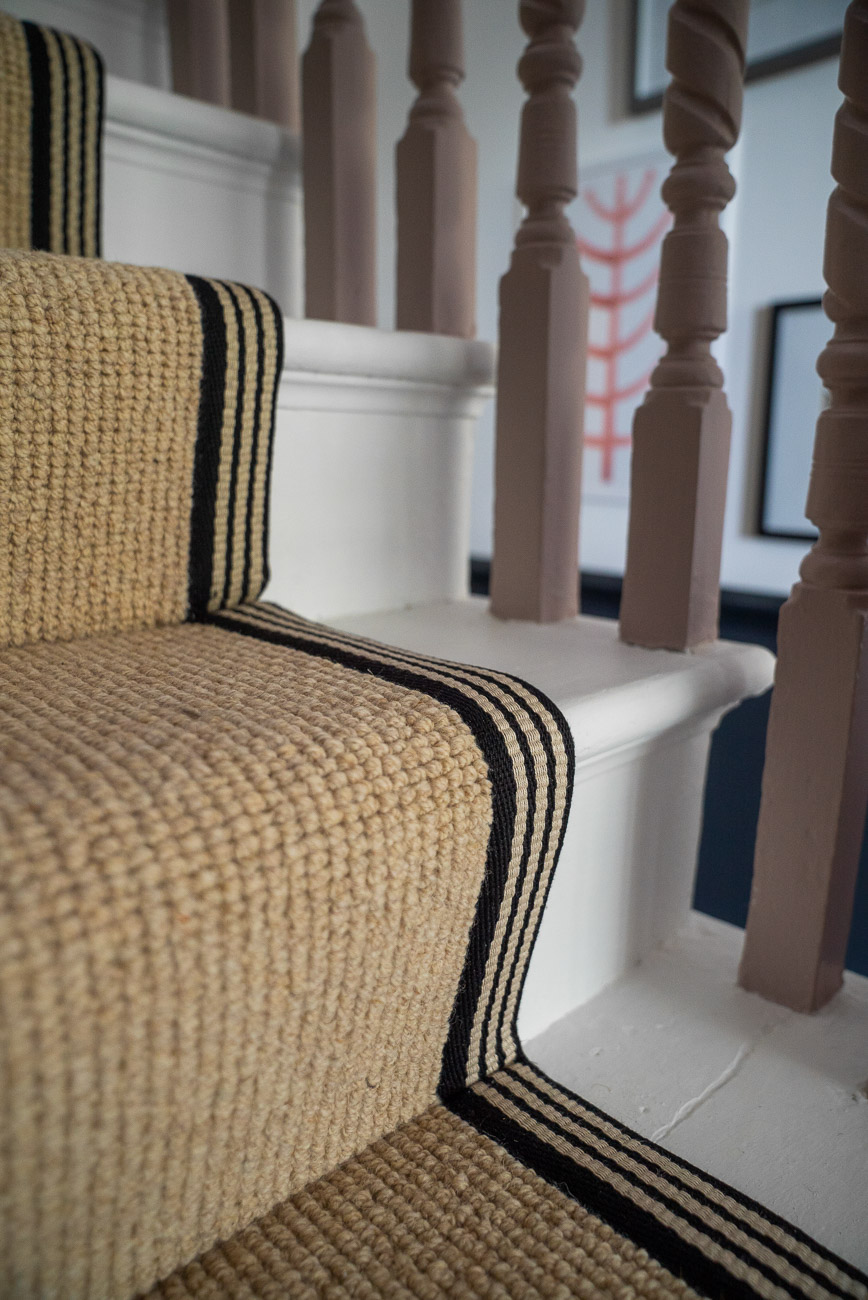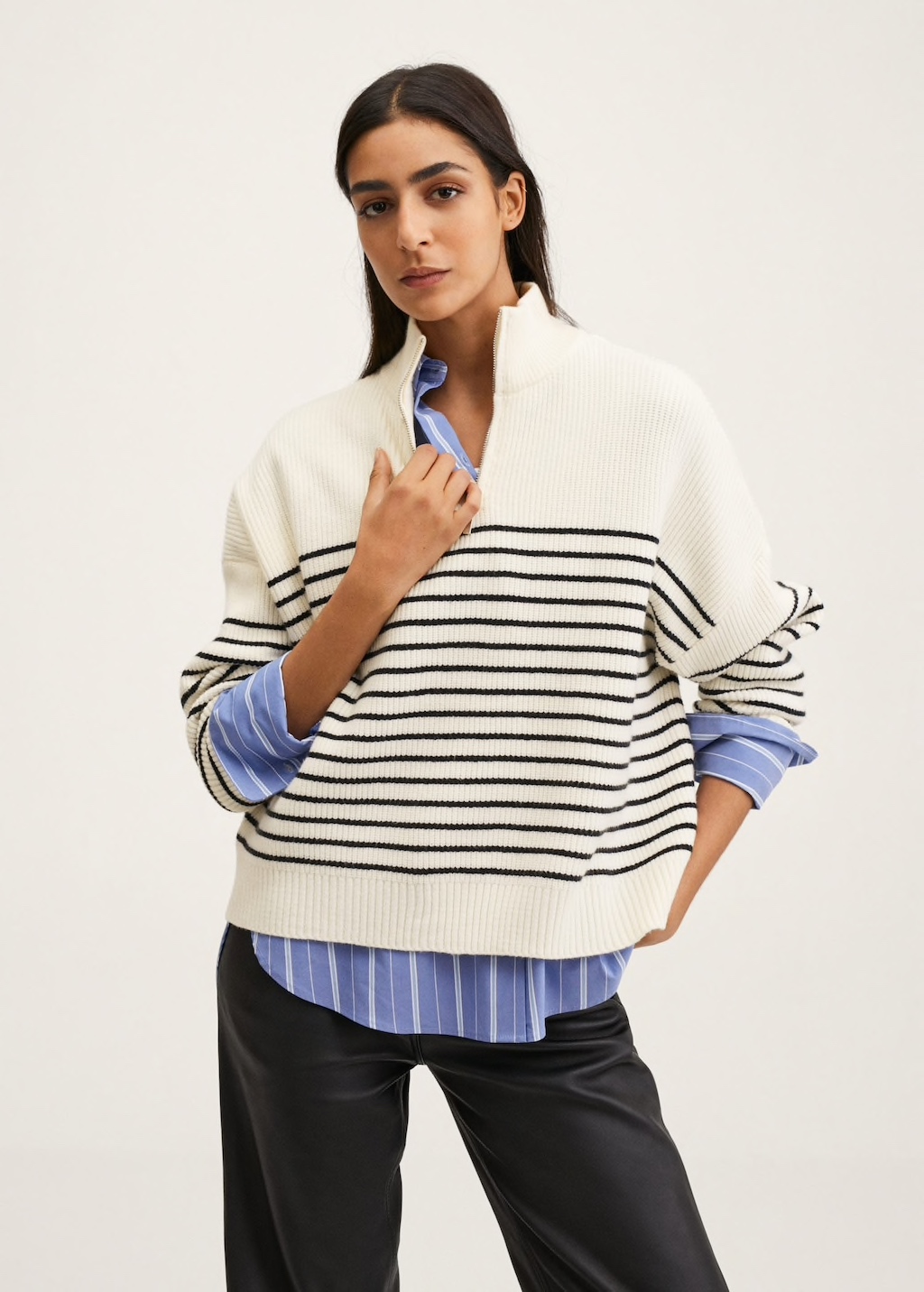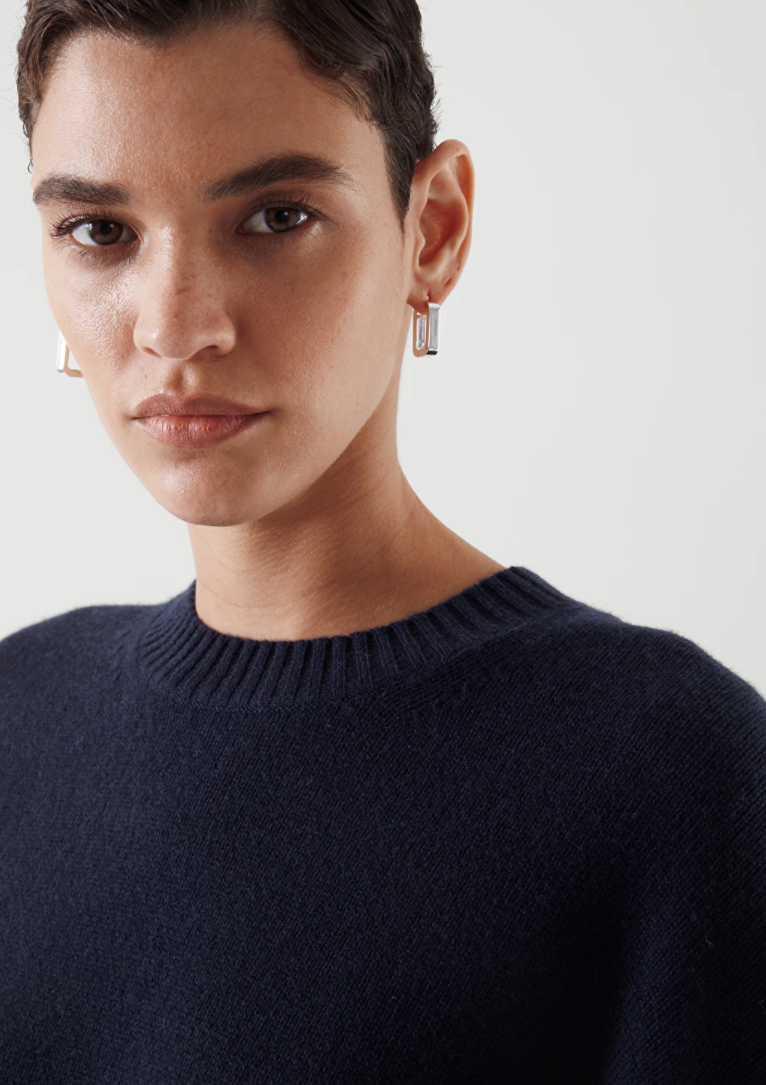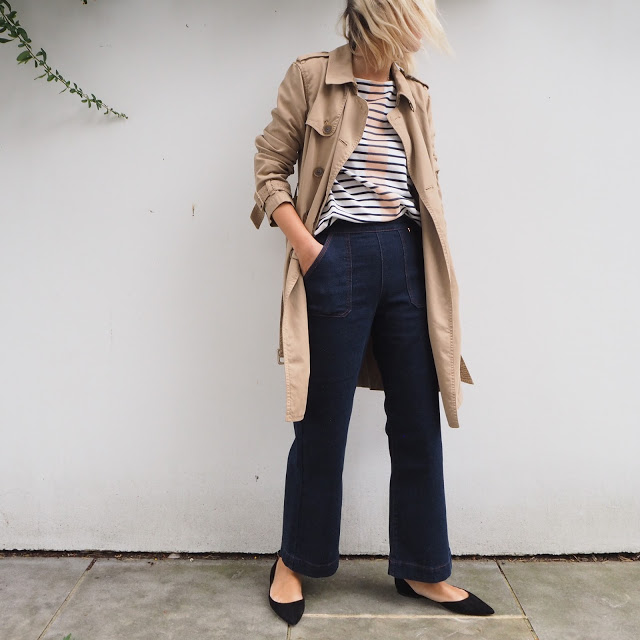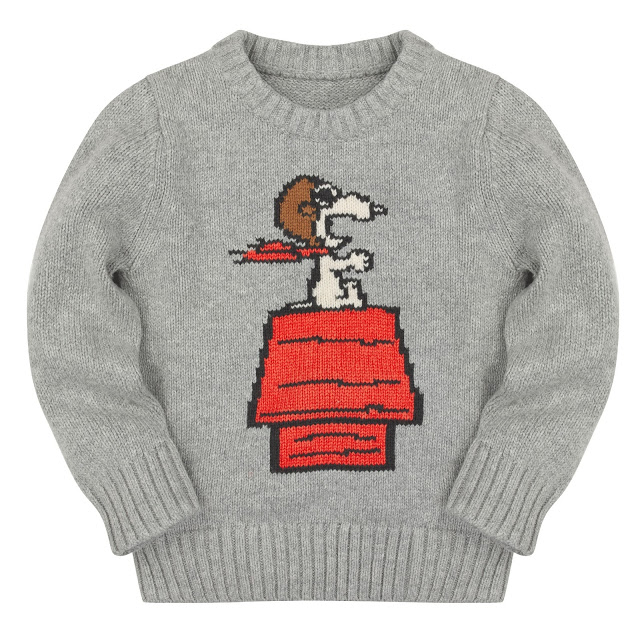Sustainable fashion writer Hannah Rochell shares her favourite clothing care tips

It’s all very well being told that we need to slow down our shopping habits for the sake of the planet, but if you’re buying fewer clothes, you need to make sure the ones you do have in your wardrobe last as long as possible. Caring better for my clothes has been a vital part of my journey to becoming more sustainable; I’m a real advocate for loving your clothes for longer, but it’s hard to keep that spark alive when you’ve shrunk your favourite cashmere sweater in the wash and your best jeans are covered in curry stains (I am guilty of both of these things).
So what’s the secret to prolonging the life of your favourite threads? I am by no means an expert (and I highly recommend the book How To Love Your Laundry by Patric Richardson and Karin Miller if you want to delve deeper into the subject), but since I gave up shopping for 12 months three years ago, I’ve never gone back to buying clothes as frequently as I used to, and I put real value on caring for the precious pieces I do have. So here are the tricks that I’ve found really work for me and my decades old wardrobe…

Do you really need to do so much laundry?
A massive lightbulb moment in our household was realising that we just didn’t need to wash our clothes as often as we thought we did, and since this is the main thread of this article, I will come back to the methods I use to get around washing clothes if they are a bit dirty later on. But I thought I’d start by saying that as well as using water and energy, the act of washing also contributes to the wear and tear of your garments, so it follows that keeping them out of the laundry basket will make them last longer.
Of course, everyone will have their own way of doing things and this feature is meant to be a handy guide rather than strict instructions. It’s probably pertinent to note that I don’t have small children, although I do have a dog that prefers his paws muddy and loves cuddles. I also mostly work from home, which makes it even easier to do less laundry because I’m less active. This is especially true when it comes to socks – I now find I can make a pair last nearly a week. Don’t judge me! But even if you lead a more active and mucky life than I do, there still might be some items you could consider washing less often.
Get into spot washing
Obviously there are some items – like underwear – that we’re not talking about today, but when it comes to everything else, I know I’ve been guilty in the past of putting something in the wash because it has a small mark on it, rather than because the whole thing needs a wash. This is where laundry soap bars come in. The Laundress at Net-a-Porter has one that is safe to use on knitwear, and Peace With The Wild’s version deals with tough stains while also being eco-friendly. Just treat the area in question – a small wet patch will also be much quicker to dry than an entire item, so you’ll be able to wear it again much quicker, too.
Be a jeans genius
Did you know that on average, a single pair of jeans uses 10,000 litres of water in its lifetime? This includes the water used to grow the cotton and during the dying processes, the manufacturing, but also the washing once they are with a customer. Many people, however – including the CEO of Levi’s – don’t believe that jeans need washing at all. I’ve got to the point where I hardly ever wash my jeans. I favour classic denim with no stretch (you may find this no-wash method more tricky with stretchy jeans); non-stretch denim is far more comfortable after a few wears anyway, so it’s a double win!
If you do need to wash your jeans, there are some extra things you can do to make them last longer. Turn them inside out to protect the colour – this is especially important with darker jeans, and keep them the wrong way out when drying on the washing line as the sun can make them fade, too. Don’t tumble dry your jeans – it’s best to let them air dry and hang them upside-down from the ankles. And if you do get a rip, consider a patch or some visible mending rather than giving up on your favourite pair.

Care for your knitwear
Something else I don’t wash as often as I used to is knitwear, which is a double bonus because I have been known to shrink my favourite jumpers. It sounds obvious – but had to be pointed out to my husband – that simply wearing a T-shirt under your jumper will save you a few washes because you won’t be wearing it right next to your skin (sometimes the simplest ideas are the best) and T-shirts are far easier to wash than knitwear.
Wool also has a thin waxy coating which gives it brilliant no-wash qualities. It’s antibacterial, stain resistant (spot washing works well because any dirt will be sitting on top of this wax) and temperature regulating, meaning it should keep you cool in summer and warm in winter (and therefore not sweat as much as you might in a synthetic fibre). It’s also really durable, so a 100% wool jumper doesn’t need much washing AND it should last much longer anyway.
If you do wash your woollens, be sure to use a delicate wash detergent – if you use a regular one that contains enzymes it will damage the protein in the wool which could lead to holes. Also, make sure you select a cool low-spin wool or delicate cycle on your machine. Spinning wool on in hot water is what makes shrinking happen. And we don’t want holes or shrinking!
Invest in a refresh
I am a lazy dry cleaner. I used to wash clothes with a dry clean only label in the hand wash cold cycle of the washing machine but this isn’t a foolproof option, so ideally, so I avoid washing them at all. So how to freshen them up?
The first thing I do, weather permitting, is air the item outside. But if it’s raining, or you don’t have outside space, you can skip straight to step two, which is to spray with a fabric freshener. I love Kair’s Finishing Spray (which smells so good it doubles as perfume) and Norfolk Natural Living’s Garment Refresher. A little goes a long way, so I find a bottle lasts me for years.
Finally, I use a hand steamer to remove creases and generally freshen the fibres up again. I first bought a hand steamer to take with me and use instead of an iron when I was travelling for fashion week, but I found it so handy I’ve now ditched the ironing board completely at home. Mine is from Steamery and I love it but they’re a little pricey (full disclosure: mine was a gift) but my brother now owns my previous steamer which was by a more affordable brand called Pur Steam. All of these refresh tips also work brilliantly for knitwear. And jeans. And everything, actually.
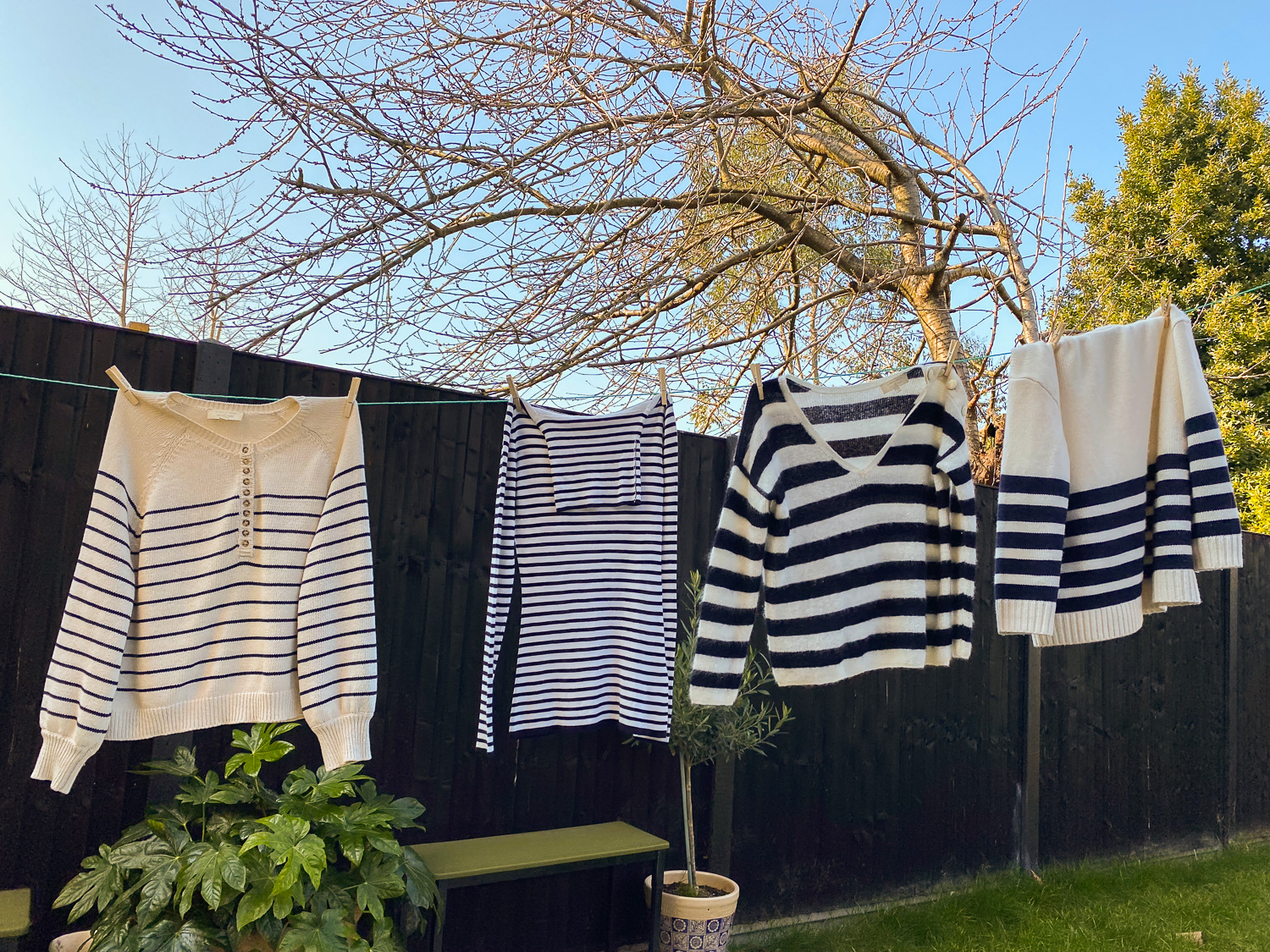
New (looking) shoes
This is an area I DO class myself as an expert in! And I could literally write a whole article on shoe care alone, but I will keep this brief with the three most useful tips I’ve come across.
- Protect your suede. Prevention is key with suede shoes because once they get rained on, it’s too late to go back! I’ve been using the same can of cheap, bog standard suede protector spray for years and it does the job really well, but if you have some particularly special suede shoes try Liquiproof – you’ll need a whole bottle to treat a pair but it’s amazing stuff and at £10 costs far less than a replacement pair of shoes. I also recommend investing in a suede brush to fluff up your suede if you do get caught out in the rain (or you could use an old, clean toothbrush with soft bristles).
- Protect your washing machine. Yes, you can put Converse and other canvas trainers in the wash and they come up a treat, but it can damage your machine, so pop them in a pillowcase first to minimise the bumps and bangs. It’s also worth bearing in mind that doing this too regularly will eventually damage the construction of the shoes too, so I only use it as a last resort.
- Clean your trainers. I’m a massive fan of trainers with everything, but they’re only going to make your outfit look put together if they’re squeaky clean, especially if they’re white. Whether it’s another old toothbrush and some toothpaste (the 80s sneakerhead’s favourite method) or my preferred brush and detergent kit from Crep Protect (which I also use on everything from brogues to Birkenstocks), giving your trainers a good scrub now and again will keep them looking newer for longer. Simple but effective.




